After your air conditioner has worked hard all summer long and kept you cool, you don’t want it to let your heat escape in the winter.
With the right preparations, you can save energy, stay warm, and worry less about your heating bills.
We’ll talk you through how to seal your window unit for winter.
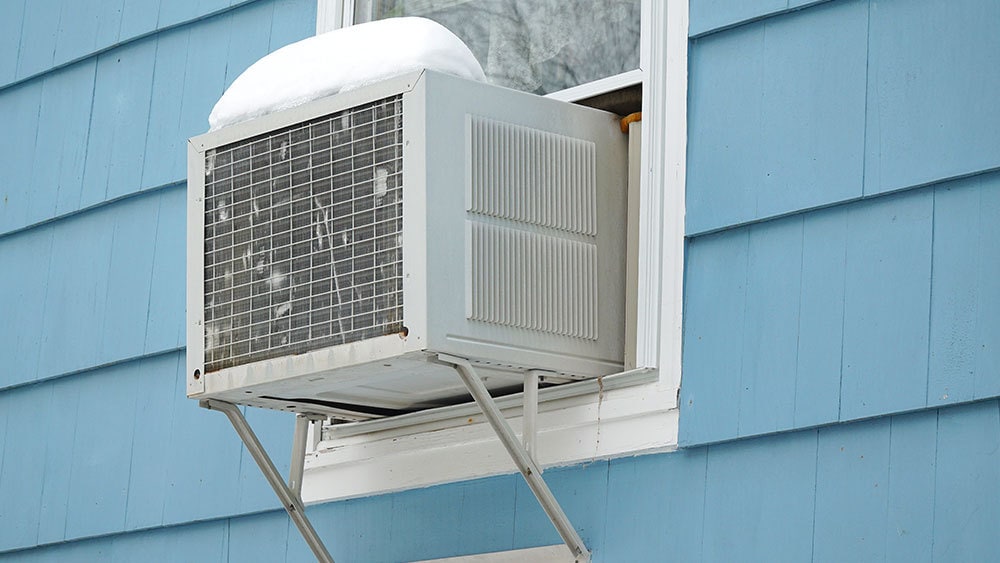
Photo credit: cielowigle.com
Project Metrics
What should you expect when sealing a window air conditioner?
Prep Time
One hour
Working Time
Two hours
Total Time
Three hours
Skill Level
Beginner
Materials Cost
$20-$50
How to Seal a Window Air Conditioner for the Winter
Preparing your window AC unit for winter is crucial. That’s why we’ve set out the process in these easy-to-follow steps so that you can do the job yourself. Make sure you start before the weather gets too cold. Each part of the process identifies what you need, what to do, and how long it’ll take.
Your first thought might have been to remove the unit altogether. If it’s possible to remove your AC and put it back when you need it, proceed with that option and make sure it’s stored somewhere safe and is covered. If you can’t do that, these steps will help you protect and seal your unit in place.



Photo credit: mrright.in
1. Turn It Off
Find the control panel of your air conditioner unit and flip the switch to the off position. You should also unplug it. These steps prevent the unit from coming on when there is a slightly warmer day, which could lead to problems when it turns cold again. They also make it safe to continue with the next steps where you will be working on the unit.
2. Clean The Unit
Not only is this an excellent opportunity to clean your AC after a hot summer, but it’s also a necessary step to prevent damage during the winter months. You might need a screwdriver to open the unit, and you’ll need a cloth, a sponge, a brush, and some soapy water.



Photo credit: howtocleanthis.com
With only a small amount of water, use the brush and sponge to gently clean the unit, getting rid of any dirt and debris. Once complete, use the dry cloth to wipe the surfaces and remove any excess moisture since that is where mold and mildew could grow.
For the interior parts, you might want to dust them lightly or use a vacuum cleaner. This step is a little time-consuming but worth it to keep your AC in working order.
3. Measure Up
Once the unit is dry, it’s time to add the insulation. You’ll need some sheets of insulating foam, about an inch or an inch and a half thick, a pencil, a utility knife to cut it, and a measuring tape.
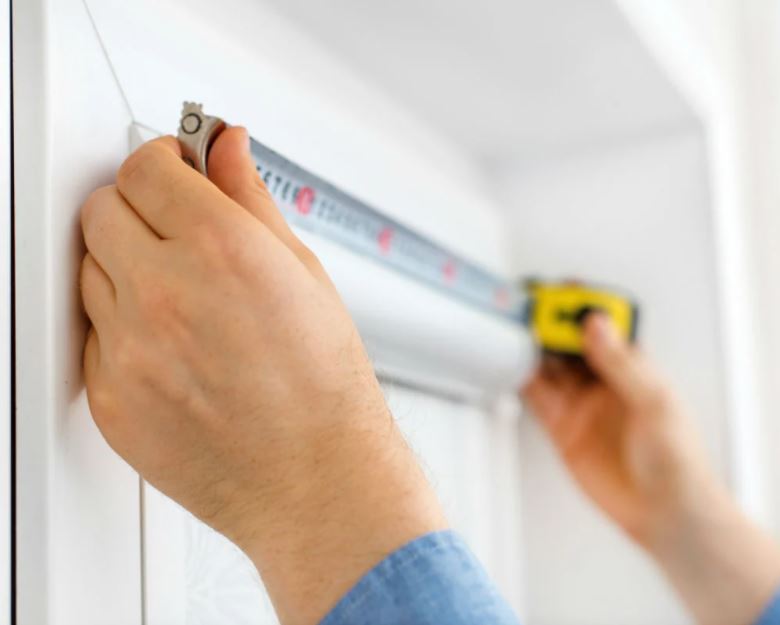


Photo credit: bobvila.com
Before you start cutting, it’s best to measure the gaps between the unit and the window to determine the size of the foam you need. It’s essential to do this first, as the tighter the fit, the better the insulation. Remember, it’s best to cut the foam too big and make it smaller later if needed.
4. Add Insulation
Mark the foam with your measurements and cut to size. You need to fill all of the gaps between the window and the unit with foam. You can use plastic sheeting or tarp and duct tape to finish, or a removable sealant and a caulking gun to add the final layer of protection.
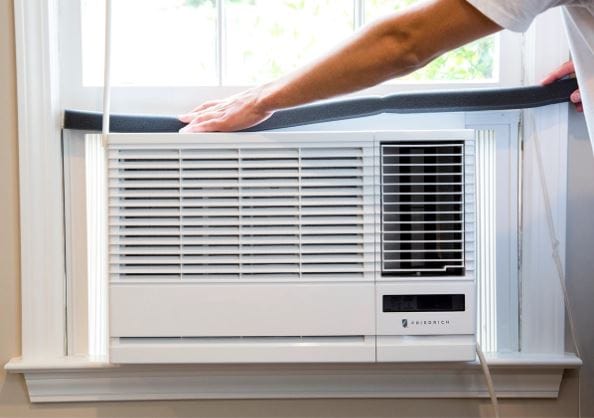


Photo Credit: HouseWeather.org
If you’re using a cover, you can secure the foam with duct tape. If you choose a removable sealant, apply this on top of the foam to help hold it in place. Now you can add an extra layer, such as a tarp, to wrap the entire unit and secure it with duct tape. This final layer adds insulation and projects your AC unit from the elements.
You’ll only need one person to complete this process. It’s worth taking your time to make sure each piece of foam is firmly held in place.
5. Check Your Unit
As the temperature changes or if you’re experiencing particularly low temperatures or a storm, you should see if the cover is still in place, whether snow has managed to get in any gaps, or if the unit is secure. You can brush away snow, add some more duct tape, or adjust the covering to ensure that the unit will stay protected.
Other Air Conditioner Insulation Tips, Tricks, and Hacks for Winter
While the steps we outlined above are straightforward, you could save yourself some time by reading these tips and tricks first.
Can You Remove Your AC?
You might think that your unit has to stay in the window all year, but it’s worth checking thoroughly to see if it can be removed. You’ll be able to close up your window normally and safely store your air conditioner if you can move it. This step protects your window, the AC and lowers your heating bill.
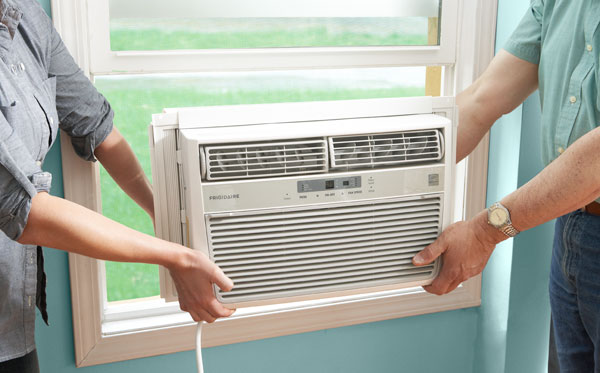


Photo credit: makespace.com
Does Your Unit Have a Cover?
Many AC units come with a cover specifically produced by the manufacturer to fit that model. In this case, you won’t need a tarpaulin to add an extra layer as it will already be protected from the elements. If you don’t have a cover, you can still use plastic sheeting.
Use The Right Insulation
If you are using a sealant, make sure it says that it’s removable on the packaging, as you’ll need to take it off again. Be careful when it comes to spray foam as an insulator. It can expand considerably, which makes it hard to measure precisely. Foam sheets that are just over an inch thick provide the right seal, although you might want slightly thicker material if you live in a very cold area.
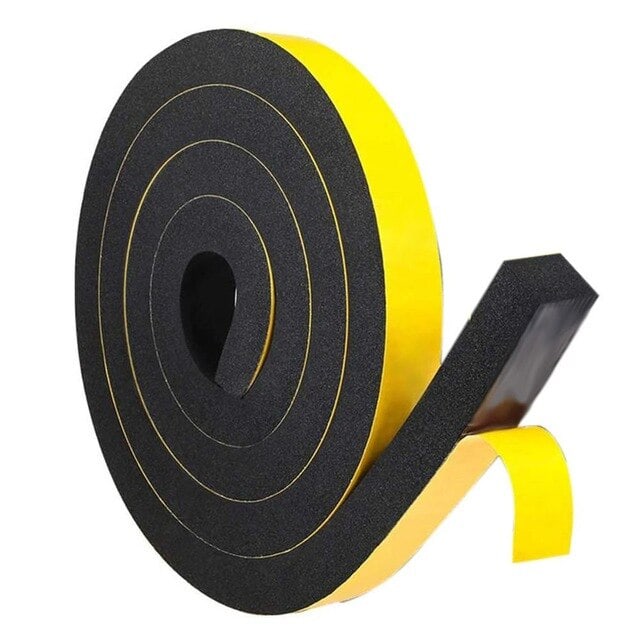


Conclusion
If your AC unit has to stay in place, remember to turn it off, clean it, measure your foam, and then secure the insulation with a sealant, duct tape, or a cover. All of these steps will prevent damage to your air conditioner and stop you from losing heat from your home.
People Also Ask
You might have been wondering about winterizing your home, including your air conditioner. With the right tools, it doesn’t need to be a difficult task. If you’re unsure how to proceed, reading these answers to commonly asked questions should help.
Do I Need to Cover My Window Air Conditioner For The Winter?
Yes. Whether you remove your window unit to store it or leave it in the window, it’s best to cover it. The cover acts as an extra layer of insulation, which stops the cold air, rain, wind, and snow from getting it. It also protects the unit from other harmful elements.



Is It Ok to Leave The Air Conditioner in the Window During Winter?
Yes. You can leave the AC in the window. If it’s easy to remove, we recommend doing so. However, if it needs to stay in place, you can follow the steps in this guide to ensure that your home, window, and unit are protected.
